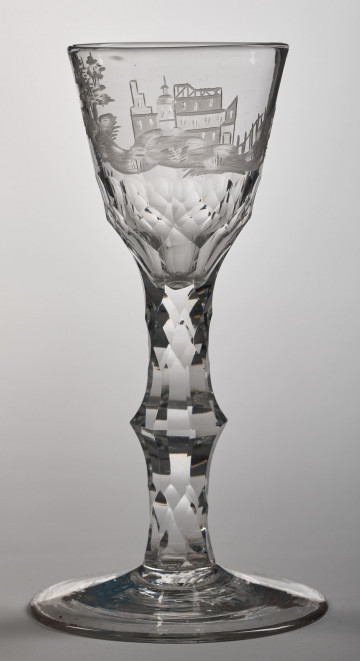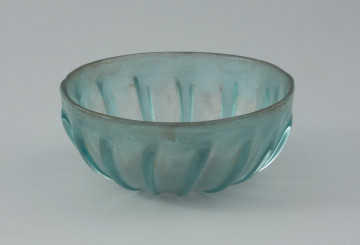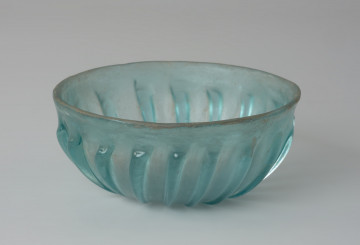
Glass with a castle motif
18th century
Castle Museum in Łańcut
Part of the collection: Antiquity
The shallow glass bowl comes from a cemetery located on a small hill by the Rega River, in the vicinity of Półchleb village. It was one of the objects from an inhumation grave, and the others were two silver fibulae with plates, a comb, and a wooden bucket with a handle and bronze fittings. In total, between 1876 and 1877, five inhumation graves were found. The vessel has a cylindrical shape, and it was made of a highly transparent, light blue-greenish glass. The the upper part of the bowl is slightly thickened, tilted outwards, and mildly rounded. The body is corrugated – this body design is described in the professional literature as “optical.” Such glass vessels, rarely found around the Barbaricum areas (outside the boundaries of the Roman Empire), are believed to be of Roman origin, probably manufactured in glass workshops from the Rhine region. The occurrence of such vessels is dated to the second half of the 3rd century. Most products manufactured in the western workshops made of glass were discovered in the Pomerania region, around the areas connected with the so-called maritime trade route, whereas the products from Italian workshops were imported to Polish territories by the Amber Road. The process of emerging tribes’ aristocracies among Barbaricum territories is connected with the import of products from Rome (including, among others: vessels made of glass, silver, or bronze, weaponry, ornaments made of precious metals).
Monika Witek
Author / creator
Dimensions
cały obiekt: height: 8 cm
Object type
furnishings and equipment; container; vessel (container); bowl; bowl (cup, goblet, coupe)
Technique
blown glass
Material
light green glass
Creation / finding place
Owner
Muzeum Narodowe w Szczecinie
Identification number
Location / status

18th century
Castle Museum in Łańcut

National Museum in Szczecin

National Museum in Szczecin
DISCOVER this TOPIC
National Museum in Szczecin
DISCOVER this PATH
Educational path